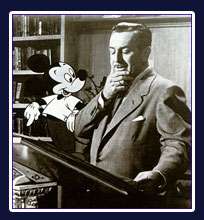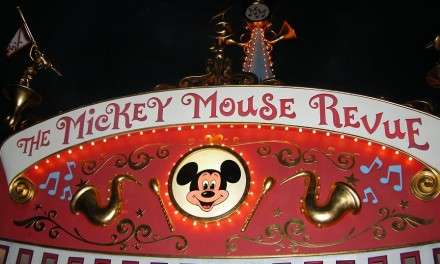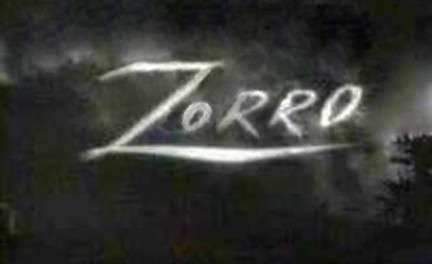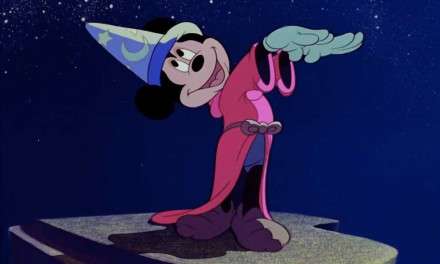I am submitting this, one of my favorite early pieces on Mickey Mouse. As the whole nation sits under basic lockdown and quarantine because of the annual flu season and now, this addition of the Coronavirus, millions of Americans are shut out of their jobs, millions, yes millions of businesses are shuttered until further notice, this depressing and bleak times reminisce of the Worldwide Great Depression. Beginning on Black Thursday, October 24th, 1929, this economic upheaval lasted until the start of World War II. To help to get us through this modern “Depression” I offer a look at how our favorite Mouse, Mickey helped lift America from the doldrums and helped see that often mentioned “Light at the end of the Tunnel”
Mickey was “Born” on November 28th, 1928 with the debut of “Steamboat Willie” at the Old Colony Theater in New York City. And a year later, the Depression commenced. Read how Mickey almost single-handedly helped our Nation and the World recover. I hope this brings a bit of cheer and hope until this crisis is over…
One of the most popular icons of the twentieth century and beyond is without much argument; Mickey Mouse. Topped only by Santa Claus, there is virtually nowhere his image is not immediately recognized anywhere in the World. Just mention the name of Mickey Mouse, and immediately visions and perceptions well up in the listener’s mind. To some, his is a money-making gimmick, to others, a corporate image, but for the majority, he represents the innocence and fun of a bygone era. Values and times have changed, but laughter and joy will always remain constant. You would literally have to go to the ends of the earth to find someone who has not heard of the mouse.
But how did Mickey gain this enormous popularity? Of course, the major factors were the genius of Walt Disney, who gave Mickey his personality and Ub Iwerks, who gave him his physical form had much to do with his success. Another major difference between Mickey and other cartoon characters of the era, Walt instilled in him a personality. He was scrappy, mischievous and a free spirit. Quick-thinking and clever, he had to rely on his wits to overcome misfortune. People could actually relate to him, found much of themselves in Mickey. But another factor glossed over by many is what added to his fame was the worldwide Depression. Mickey was a national hero to most of the country in the dark days of America’s depression era. He first burst upon the scene when America was riding high in jobs, money and good times. But a scant year later, the bubble burst and America along with the rest of the world became victim to the worst economical upheaval in history, which lasted almost a decade until the start of World War II. Let’s take a quick history lesson in order to understand Mickey’s impact on America during those trying times.
Mickey Mouse, as per Disney history was born on November 18th, 1928 with the showing of Steamboat Willie at the Old Colony Theater in New York. This vehicle, the first synchronized “Sound” cartoon was what launched Mickey into the limelight. These were high times for America. It was the era of Bathtub gin, Speakeasy’s, new morals and ideas. America after World War I was the leader in Technology and science and most people lead a good life. However, on Black Tuesday, October 29th, 1929 the bubble burst; and in an instant, millions of people lost everything, their savings, homes and many, even their lives! Stocks in America lost over 40 percent of their previous value, thousands of banks became insolvent and closed. This was before FDIC insurance, and the financial fallout affected virtually everyone, even the very rich.
By 1932, 30 percent of the workforce was unemployed, and to top, this misery, the largest and longest drought, the dustbowl, began in the Midwest and also lasted about a decade. Thousands of families lost their crops and then their farms and many just left unable to pay mortgages or bills. The roads were choked with families looking for a new start somewhere else. The poor and middle class were hit the hardest. They trusted no one. They blamed big business, the Government and the rich for their woes. America was at its lowest ebb and needed someone or something to give it some hope.
Enter Mickey Mouse. This little personage literally pulled America vina4d up from despair and gave it the hope and vision for better times ahead. Mickey Mouse was given his physical form by Ub Iwerks, but his personality and inner self was given to him by Walt Disney. Walt once said that “I love Mickey Mouse more than any woman I have ever known”. Mickey had all of Walt’s attributes, his vision, courage, humor and most importantly, much of Walt’s mischievous side. He was an everyman, a scamp, a common worker, and he had the same dreams and hopes as common America. He was someone the people could relate to and finally trust. In Mickey, they saw themselves, vying for the same goals. Mickey’s greatest draw was that he is just so human.
By 1931, the Mickey Mouse Club (Before the 1950’s Club!) had over a million members, meeting in movie theaters, watching Mickey Mouse cartoons, and getting the burst of hope they needed so desperately! In the 1930s a movie ticket cost a dime or a quarter. And although money was so precious, many found that it was worth the fare to see their hero. The cartoons were usually shown before the main feature, and people came to see Mickey. His adventures showcased his courage, humor and his big heart, giving to those who had less than he did; and the masses related to this. In the cartoon short, “The Whoopee Party in 1932, Mickey and Minnie give a big party with food and entertainment when most people could not even afford a loaf of bread. They saw him sharing with those who had little or nothing. And in the short, “Mickey’s Good Deed”, Mickey is destitute and is playing his Cello on Christmas Eve for money. He sees a family worst off than himself, so he sells his most prized possession, his dog Pluto so they could have a Christmas dinner. This showed the people that all is not lost and even those with little could still help others with less.
Another short that many people could relate to is “Building a Building”, 1933. Here Mickey quits his precious job to protect his girl, Minnie from the clutches of the foreman, Peg Leg Pete. As scarce as jobs were, Mickey showed that honor and respect are even above money. America connected to Mickey because his problems were mirrored in theirs. He came to the rescue when no politician, actor or any other person of the times could. People loved and trusted him, and he gave hope, courage and most importantly, he gave America laughter. America needed to laugh and like his “Father”, Walt Disney he triumphed again and again. Mickey almost single-handed saved the nation from the depression and despite more than 92 years since his birth, still gives us laughter, hope and in many, a longing for the bygone years when life was simpler and more innocent.





